calsfoundation@cals.org
St. Louis–San Francisco Railway
aka: Frisco
The St. Louis–San Francisco Railway Co. (SLSF), better known as the Frisco, was organized in 1876 in Missouri. By 1881, the company consisted of a handful of lines concentrated in central and southern Missouri but reaching to Wichita, Kansas; Vinita, Oklahoma; and Fayetteville (Washington County), Arkansas. Although the Frisco never built into the heart of Arkansas, its feeder lines across northwestern and northeastern Arkansas connected communities with other lines across the state as well as the markets throughout the nation, allowing development of agricultural resources, industrial hubs, and resort communities on the periphery of the state.
The Frisco was built on remnants of the older Atlantic and Pacific Railroad, acquiring right of way and trackage in Missouri and Indian Territory (present-day Oklahoma) after that railroad’s bankruptcy. In western Arkansas, the Frisco began building a line to Fort Smith (Sebastian County) as part of a plan to reach Texas. Only a step behind the western construction, the Frisco also began developing a network of track in northeast Arkansas. Both northern corners of the state proved to be commercially vital for the Frisco, initially because of the great timber resources across the northern part of the state. The rail boom across Arkansas and the rest of the nation during the 1880s meant that much of the timber was used for railroading itself, but other timber-related industries grew along the Frisco tracks, from wagon builders to barrel-stave makers to lumber yards for building construction. This boom shifted Arkansas’s population during the late nineteenth century away from the steamboat cities and into the burgeoning new towns along the rail lines.
The Frisco’s first line into Arkansas came south from Monett, Missouri. The Frisco began construction of its Arkansas Division at Monett in April 1880, reaching the newly founded town of Rogers (Benton County)—which was named in honor of the Frisco’s general manager, Charles Warrington Rogers—on May 10, 1881. Less than a month later, on June 8, 1881, a passenger train with Charles Rogers aboard entered the northern limits of Fayetteville for the first time. A crowd estimated by local papers in the thousands celebrated the arrival.
By the end of the year, the Frisco had built south along the West Fork of the White River to its first major obstacle: the Boston Mountains. A temporary track was built over the hilltop at Winslow (Washington County) while work began on a 1,693-foot-long tunnel, the state’s first railroad tunnel. South of the tunnel, the terrain of the route proved just as difficult, with three high trestles being built to cross deep hollows in the next 2.5 miles, the tallest of which was 117 feet. Meanwhile, the Fort Smith and Van Buren Bridge Co., capitalized by the Frisco, began construction of a bridge over the Arkansas River at Van Buren (Crawford County), finishing it in February 1886 and allowing the railway line to continue southwest to Paris, Texas.
During the latter part of the nineteenth century, a variety of spurs, branches, and short lines were built off this mainline. The first, built by the independent Eureka Springs Railway, was a short line run east slightly more than twenty miles from Seligman, Missouri, to the young resort town of Eureka Springs (Carroll County), where the Frisco was instrumental in building the Crescent Hotel. Another spur ran west to Bentonville (Benton County) and eventually continued into the Indian Territory. From Jenson (Sebastian County), the Frisco also built a branch to Mansfield (Sebastian County) to access local coal fields. Just south of Fayetteville, a short line was built southeast up the White River valley to St. Paul (Madison County) and Pettigrew (Madison County). This line was designed to get at the hardwoods of the Ozark Mountains to supply the railway company with oak ties as well as feed the booming lumber industry. More short lines were built at the turn of the century. The Frisco-owned Ozark and Cherokee Central ran 144 miles west from Fayetteville to Okmulgee, Indian Territory.
Along with the freight, the Frisco began marketing resort towns across northwest Arkansas, such as Eureka Springs, Monte Ne (Benton County), and Winslow, the “summit of the Ozarks.”
In the northeastern corner of the state, the Frisco built a line south along the west side of the Mississippi River in the 1880s through Blytheville (Mississippi County), Osceola (Mississippi County), and Marion (Crittenden County) to Memphis, Tennessee. Railcars were initially ferried across the Mississippi River until a bridge was built in 1892 by the Kansas City and Memphis Railway and Bridge Company, a company created by the Kansas City, Fort Scott and Gulf Railroad (KCFS&G). The KCFS&G had built a line from Springfield, Missouri, to Memphis, entering Arkansas south of Thayer, Missouri, and following the Spring River southeast through Jonesboro (Craighead County) to Memphis. The Frisco bought this line at the turn of the twentieth century, consolidating its commercial interests in the region. After timber began to run out, the Frisco shifted its emphasis to moving cotton out of the region to market (Oklahoma was also a source of cotton production).
The downside of the Frisco’s consistent expansion and acquisition was that it faced difficult financial straits by 1912 when it was sustaining operating deficits averaging $1 million a year. Levees along the Mississippi River gave way that year, flooding the mainline for more than a month and a half, hurting its revenue further. Beginning in 1913, the railroad went into receivership for three years. Put back into stockholders’ hands after World War I, the Frisco struggled through the 1920s and 1930s, falling into receivership again in 1932 and abandoning many of its branch lines.
After World War II, the Frisco became a much leaner company with emphasis on its profitable freight lines. With the rise of automobile use and the interstate system, passenger service declined on all rail lines during the 1950s. The Frisco terminated its northwest Arkansas passenger service in 1965 and northeast Arkansas passenger service two years later but continued most of its freight lines until 1980, when it was acquired by the Burlington Northern Railroad.
Today, what is now the Burlington Northern–Santa Fe Railway continues to operate most of the Frisco’s main lines in northeast Arkansas. In northwest Arkansas, the main line between Monett and Fort Smith was sold to the Arkansas and Missouri Railroad. The southwest line into Hope (Hempstead County) was sold to the Kiamichi Railroad.
For additional information:
Dew, Lee A. “The J.L.C. and E.R.R. and the Opening of the ‘Sunk Lands’ of Northeast Arkansas.” Arkansas Historical Quarterly 27 (Spring 1968): 22–39.
The Frisco: A Look Back at the Saint Louis-San Francisco Railway. Springfield-Green County Library. http://thelibrary.springfield.missouri.org/lochist/frisco/frisco.cfm (accessed March 30, 2022).
Hull, Clifton E. Shortline Railroads of Arkansas. Norman: University of Oklahoma Press, 1969.
Miner, H. Craig. The St. Louis-San Francisco Transcontinental Railroad: The Thirty-fifth Parallel Project, 1853–1890. Lawrence: University Press of Kansas, 1972.
Woods, Stephen E. “The Development of Arkansas Railroads, Part I.” Arkansas Historical Quarterly 7 (Summer 1948): 103–140.
———. “The Development of Arkansas Railroads, Part II.” Arkansas Historical Quarterly 7 (Autumn 1948): 155–193.
Charles Y. Alison
University of Arkansas, Fayetteville
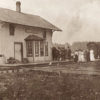 Cave Springs (Benton County)
Cave Springs (Benton County) Combs, Cass and Eastern Railroad
Combs, Cass and Eastern Railroad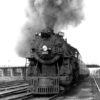 Railroads
Railroads Transportation
Transportation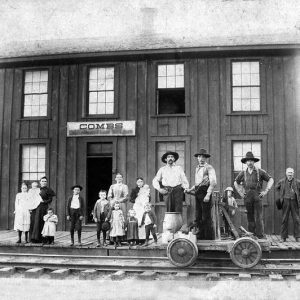 Combs Train Depot
Combs Train Depot 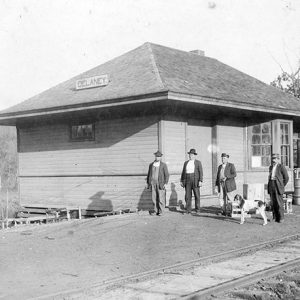 Delaney Depot
Delaney Depot 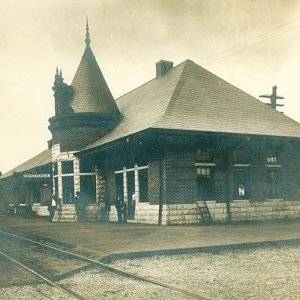 Fayetteville Frisco Depot
Fayetteville Frisco Depot 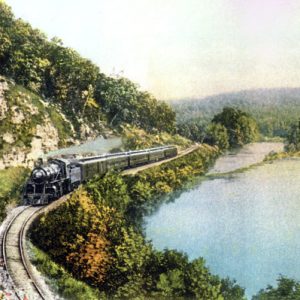 "Frisco" Railway near Hardy
"Frisco" Railway near Hardy 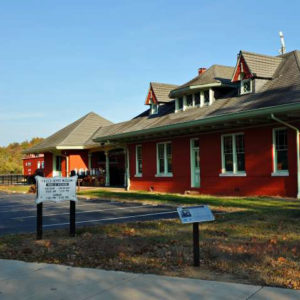 Mammoth Spring Frisco Depot
Mammoth Spring Frisco Depot 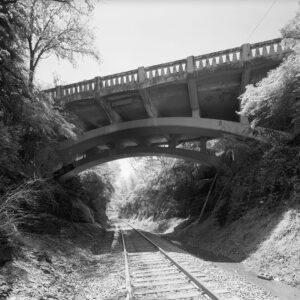 Maple Street Bridge
Maple Street Bridge 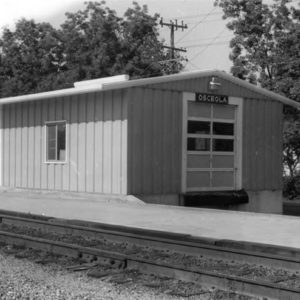 Osceola Depot
Osceola Depot 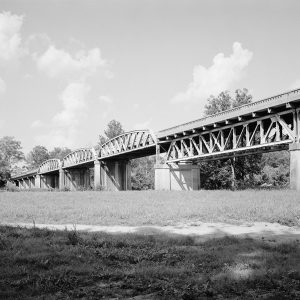 St. LouisSan Francisco Bridge
St. LouisSan Francisco Bridge 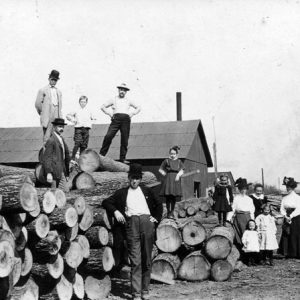 St. Paul: Railroad Timber
St. Paul: Railroad Timber 




Comments
No comments on this entry yet.